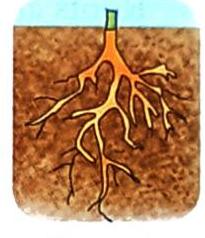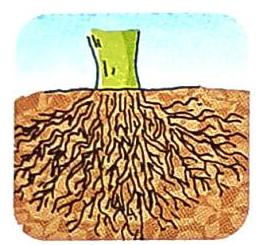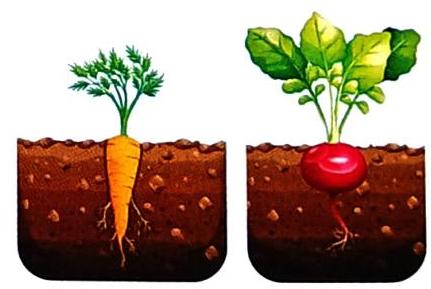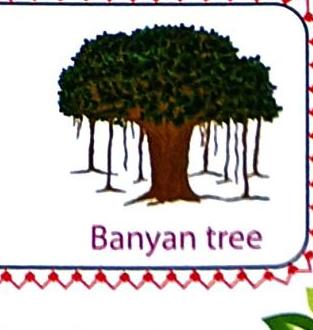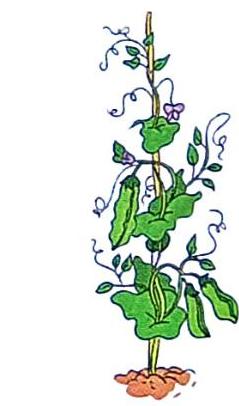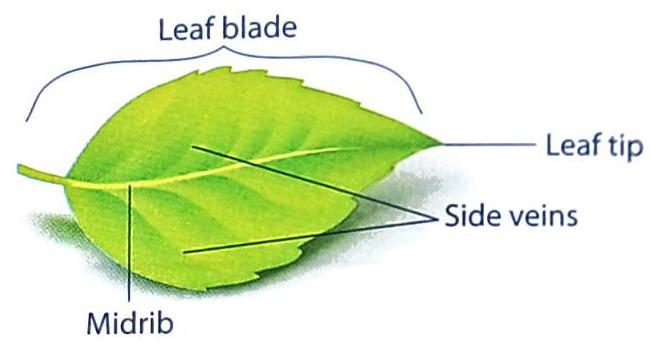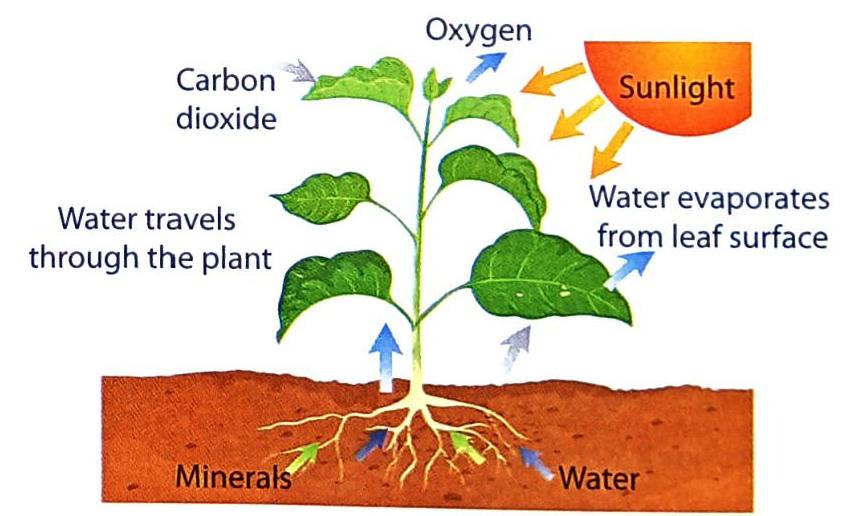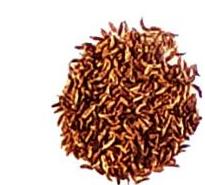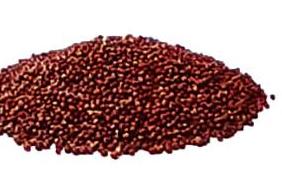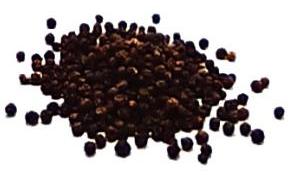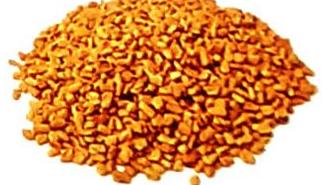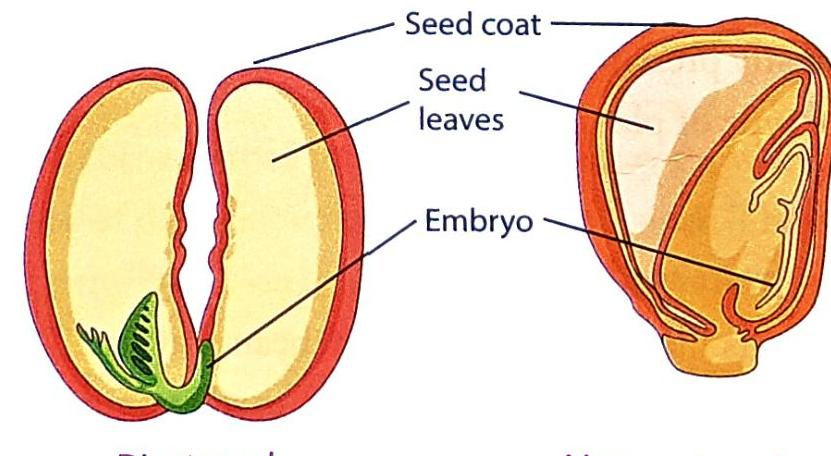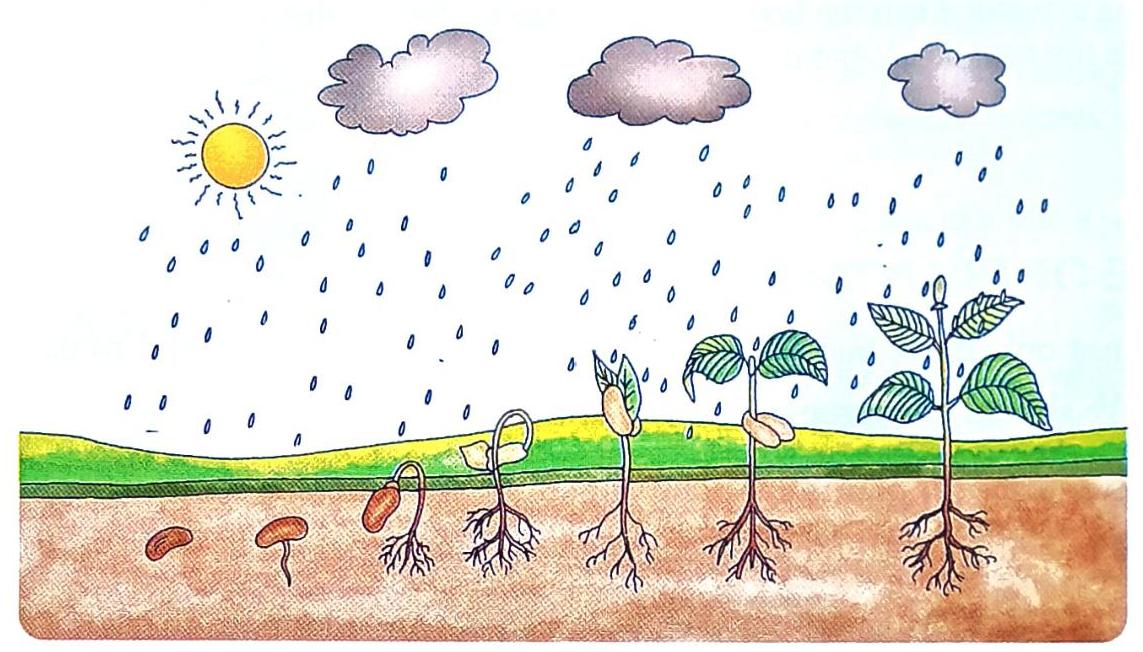Chapter: 05. Plants In The Surroundings
Plants in the Surroundings
Plants are incredibly important and useful to us. All animals, including human beings, rely on plants for many essential things. Plants give us food, fibers, wood, medicines, and many other things we need to live.
Chapter Objectives
This chapter will help you:
Learn about the different parts of a plant and what each part does. Understand the structure of a seed. Learn about the process of germination, which is how a seed grows into a plant. Understand how to care for plants so they can grow healthy and strong. PARTS OF A PLANT - STRUCTURE AND FUNCTIONS
Just like animals and humans have different body parts that do different jobs (like eyes for seeing or hands for holding), plants also have various parts that perform specific functions. All these parts work together to help the plant live and grow.
Plants have two main parts:
Root: The part of the plant that grows under the soil. Shoot: The part of the plant that is visible above the soil, including the stem, branches, leaves, buds, flowers, and fruits. Root
The root is the part of the plant that grows underground, usually away from sunlight. There are two main types of roots:
Has one main root that grows from the base of the stem. Produces many smaller side roots (lateral roots). Grows deep into the soil. Examples: Beans, peepal tree, turnip, mustard, carrot, radish, mango.
Has many fine, branching roots that grow from the end of the stem. These roots spread widely within the top layers of the soil. Examples: Rice, wheat, onion, grass, coconut tree, palm tree.
Differences between Taproots and Fibrous Roots
Small, thin roots grow from the main root. Examples: Carrot, turnip, mango, radish. Have no main root, as many branching roots arise from one point. Bushy roots grow from the base of the stem. Examples: Coconut tree, palm tree, wheat, onion, grass. Functions of the Root
Anchoring: Roots help plants firmly attach to the soil, preventing them from falling over. Food Storage: Roots of some plants store food that the plant can use later. Examples include carrots, turnips, and radishes, which we can eat.
Absorption: Roots absorb water and minerals from the soil. These are then sent to different parts of the plant through the stem. Soil Conservation: Roots help save the soil by binding it together, which prevents soil erosion (the top portion of soil being gradually damaged or removed by rain or wind). Special Roots (Aerial Roots): Most roots grow underground, but some plants have roots that grow above the soil. These are called aerial roots. Examples include banyan and mangrove trees.
Shoot
The shoot is the visible part of the plant that grows above the ground. It usually grows towards sunlight and includes the stem, branches, leaves, buds, flowers, and fruits.
Stem
The stem is the main part of the shoot. Different plants have different types of stems:
Thick and Strong Stems (Trunks): Trees like mango and banyan have thick and strong stems called trunks.
Soft and Green Stems (Herbs): Some plants like coriander have soft and green stems, and are called herbs. Thick Woody Stems (Shrubs): Plants like Bougainvillea and Hibiscus have thick woody stems that branch close to the ground; these are called shrubs. Creepers: Plants that creep along the ground because they have weak stems. Examples: Watermelon, pumpkin. Climbers: Plants that need support to stand upright and grow properly. They have weak and thin stems. Examples: Money plant, sweet pea, bitter gourd.
Functions of the Stem
Support: The stem supports the branches, leaves, and other parts of the plant. Transport Water and Nutrients: It carries water and minerals absorbed by the roots to various parts of the plant. Transport Food: The food made by the leaves is distributed throughout the plant with the help of the stem. Food Storage: Some stems grow underground and store food, which can be eaten as vegetables. Examples: Ginger, turmeric, potato. Leaf
Leaves are essential because they prepare food for the plant using water, air (carbon dioxide), and sunlight.
Observe a leaf closely:
Lamina (Leaf Blade): This is the flat, broad part of the leaf. Midrib (Main Vein): A main vein runs down the center of the leaf. Side Veins: Many branches extend from the midrib, called side veins, which carry water and food throughout the leaf. Stomata: Leaves have tiny pores (holes) called stomata, which help the plant breathe by exchanging gases (taking in carbon dioxide and releasing oxygen). The upper and lower sides of a leaf blade are slightly different in colour:
The upper side is usually dark and smooth. The lower side is light in colour and rough. Functions of Leaves
Food Making (Photosynthesis): The most important function of leaves is to make food for the plant. This process is called photosynthesis. Leaves have a green pigment called chlorophyll, which traps sunlight. In the presence of carbon dioxide (from the air), water (absorbed from the soil), and sunlight, leaves produce food for the plant.
Oxygen Release: While making food through photosynthesis, leaves release a gas called oxygen, which is vital for the survival of all living organisms. Water Conservation and Protection: In some plants (like cactus), leaves change into spines to conserve water and protect the plant from animals that try to eat them. Water Release: Leaves also release extra water from the plant, which helps in the upward movement of water from the roots to the rest of the plant.
Flowers
Flowers are the colorful parts of plants. They grow from small buds on the stem and come in different colors, shapes, and sizes. Flowers are often used for decoration during festivals and ceremonies like weddings.
Insects like bees suck nectar from flowers. Some flowers, such as cauliflower and broccoli, are also eaten as vegetables.
Functions of Flowers
The most important function of flowers is to change into fruits. Buds produce flowers, and after some days, these flowers transform into fruits.
Fruits
Fruits are the fleshy parts of the plant. Examples include mango, apple, banana, and orange.
Functions of Fruits
Edible: Many fruits are edible, meaning we can eat them, such as mango, papaya, and apple. Seed Protection: The main function of the fruit is to protect the seeds inside. Some fruits have only one seed (e.g., mango, litchi). Some fruits have a few seeds (e.g., apple, grapes). Some fruits have many seeds (e.g., watermelon, papaya). Seeds
Seeds are usually found inside fruits. Seeds vary greatly in shape, size, and color depending on the type of plant they come from.
Functions of Seeds
New Plant Growth: New plants grow from seeds. Edible Seeds: We eat the seeds of many plants, which are known as edible seeds. Examples: Gram, wheat, corn, beans, rice. Spices: Some seeds are used as spices to add flavor to food. Examples: Cumin, mustard, black pepper, fenugreek.
Structure of a Seed
Even though seeds of different plants vary in size, shape, and color, they all share some common parts.
Seed Coat: Seeds have a hard outer covering called the seed coat. Its job is to protect the seed from being damaged. To observe: If you soak bean seeds for 2-3 days, the seed coat becomes soft and easier to remove. Cotyledons (Seed Leaves): Inside the seed coat, you will find seed leaves, which are called cotyledons. These cotyledons contain all the food supply that the baby plant needs to grow. Dicotyledonous (Dicot) Seeds: Seeds with two cotyledons. Example: Kidney beans. Monocotyledonous (Monocot) Seeds: Seeds with only one cotyledon. Example: Corn seeds. Embryo (Baby Plant): The baby plant inside the seed (within the cotyledon(s)) is called the embryo. The embryo has a tiny shoot and a tiny root. The shoot will later grow upwards out of the ground to become the stem. The root will spread downwards under the ground. Why not all seeds grow: Not all seeds sown in the soil grow into new plants. This is because they might face competition for space, food, and water. Also, some seeds are eaten by animals, while others get destroyed.
GERMINATION
A seed needs the right amount of warmth, water, and air to grow into a plant. The process by which a seed grows into a young plant or sapling is called germination.
Sprouts: Newly germinated seeds are called sprouts. Edible sprouts are very healthy to eat. Plumule: The part of the seed that grows upwards and gives rise to the shoot system (stem, leaves, etc.). Radicle: The part of the seed that grows downwards and gives rise to the root system.
CARE OF PLANTS
Plants not only make our surroundings beautiful, but they are also useful to us in many ways. It is very important to take proper care of plants so they can thrive.
Here’s how you can care for plants:
Sunlight: Ensure your plants get plenty of sunlight. Different plants need different amounts of warmth and light for healthy growth. Space: Provide enough space between any two growing plants. If plants are too close, they will compete for food and other resources, and may not grow healthy. Watering: Water your plants regularly. The amount of water needed varies from plant to plant. Some plants require more frequent watering, while others, like cacti, need watering only once every few weeks. Nutrients: Remember to add compost, manure, and fertilizers to your plants every few months. These substances enrich the soil, providing plants with more essential nutrients. Cleanliness: Rinse small plants or spray water on your plants to clean dust off their leaves. This helps them breathe and absorb sunlight better. Weeding: Regularly remove unwanted plants (weeds) from your garden. Weeds compete with your plants for nutrients, water, and sunlight.
Key Terms
Here are some important terms to remember from this chapter:
Taproots: Roots that have one main root from which many smaller roots grow. Fibrous roots: Roots that arise from the end of the stem and spread widely within the soil. Soil erosion: The gradual damage or removal of the top portion of soil by natural forces like rain or wind. Trunk: The main, thick stem of a tree from which various branches grow. Lamina: The flat and broad part of a leaf. Also called the leaf blade. Veins: A number of fine lines that run across the leaf blade, carrying water and food. Chlorophyll: The green-colored pigment found in leaves that traps sunlight, which is essential for the plant to make its food. Photosynthesis: The process by which a plant uses energy from sunlight, carbon dioxide (from the air), and water to produce its own food. Cotyledons: The seed leaves found inside a seed, which contain the food supply for the baby plant. Embryo: The baby plant that is located inside the cotyledon(s). Germination: The process by which a seed grows into a young plant or sapling.
Chapter Summary
This chapter taught us about the fascinating world of plants, from their various parts and what each part does, to how new plants grow from seeds, and how we can best care for them. Plants are vital for life on Earth.
 Self Study
Self Study


